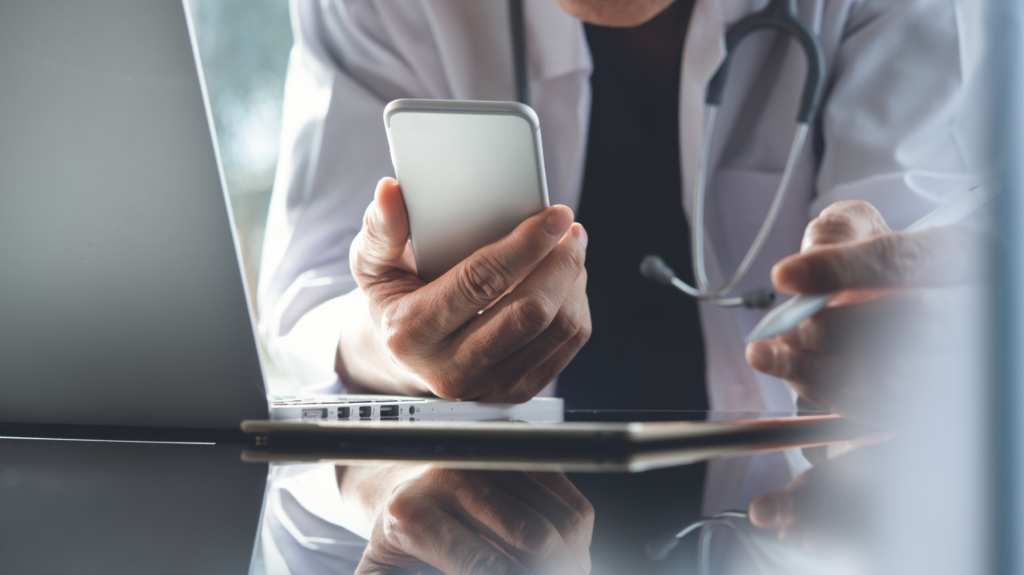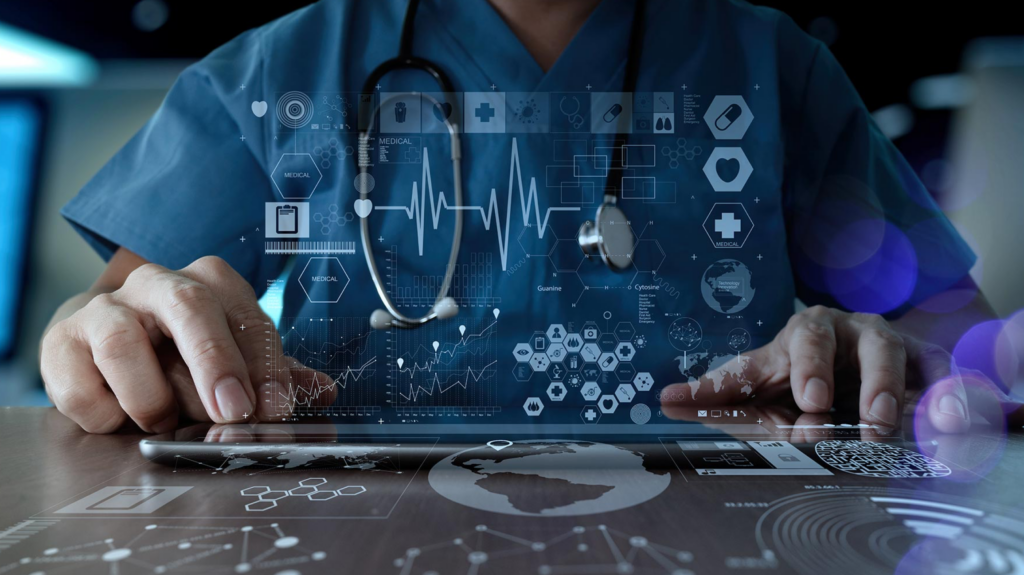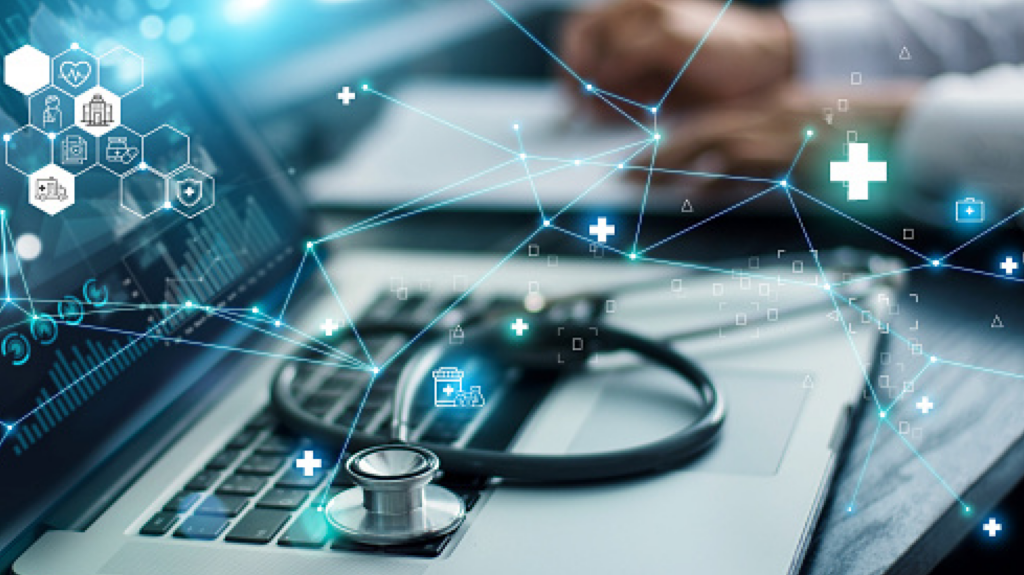As healthcare moves towards value-based care, providers must actively manage chronic conditions that previously required extensive manual efforts. Remote patient monitoring (RPM) has emerged since then, especially propelled by recent advancements in AI. Initially implemented as a solution for limited healthcare accessibility during the pandemic, it is now thriving with the aid of regulatory efforts to improve healthcare availability.
A study by the GAO (U.S. Government Accountability Office) showed that RPM was commonly reported by provider associations and patient associations as a significant factor that improved or maintained the quality of care, which further encouraged its use and implementation. The global RPM systems market is projected to be worth more than $1.7 billion by 2027, up nearly 128% from the $745.7 million opportunity the market currently represents.
This blog will explore the essential technological factors to consider for successful RPM projects, as shared by KMS Healthcare CTO – Kaushal Amin, drawing on our extensive experience in developing RPM solutions for our esteemed clients.
An Overview of Remote Patient Monitoring Solutions

What is Remote Patient Monitoring, and How Does It Help?
Remote patient monitoring is a type of telehealth in which healthcare providers monitor patients outside the traditional care setting using digital medical devices, such as weight scales, blood pressure monitors, pulse oximeters, and blood glucose meters. Data collected from these devices is electronically transferred to care providers. Automated feedback and workflows can be integrated into data collection, flagging out-of-range values or concerning readings of the patient’s diagnosis.
Historically, RPM was used to measure and monitor symptoms of chronic conditions, such as cardiac diseases, diabetes, and asthma. Patients may have experienced this through wearable devices, like Holter monitors, that can measure heart rhythms to detect heart conditions and monitor cardiovascular diseases remotely.
People with chronic diseases, which are lifelong and often challenging to control, can greatly benefit from RPM solutions as they offer a means of consistent monitoring that is otherwise impossible through traditional healthcare methods. Dr. Saurabh Chandra, director of telehealth at the University of Mississippi Medical Center (UMMC), says RPM programs have several benefits for patients. These benefits are wide-ranging:
- Enhancing patient engagement in their medical care and improving their adherence to treatment plans.
- Expanding physician reach, easily providing care to patients without the need to travel for in-person visits.
- Enabling physicians to remotely monitor patients’ health statistics, minimizing hospitalization in the short term and preventing or delaying complications from diseases like microvascular stroke or heart attack in the long term.
- Decreasing costs by preventing unnecessary hospitalization, readmissions, and emergency room visits.
Understanding the Technology Behind RPM
Remote patient monitoring technology can range from handheld medical devices to online platforms that allow patients to input data. Here are some prime examples:
- Glucometers: Automatic blood sugar readings for timely diabetes treatment adjustments.
- Remote ECG Monitors: Early detection of heart rhythm abnormalities and intervention.
- Asthma Inhaler Sensors: Improved asthma management with inhaler data tracking.
- Pulse Oximeter: Remotely monitor heart rate and blood oxygen levels, critical indicators for patients with chronic diseases.
- Remote Wound Monitoring: Remote wound healing progress tracking for post-surgery or chronic wounds.
RPM technologies collect data and seamlessly transmit it to a centralized platform, enabling doctors and patients to monitor health statistics conveniently. Unlike other telehealth delivery methods, RPM services do not require interactive audio-video and virtual visits, nor must patients be located in rural areas. RPM simply uses technology to observe a patient’s physiological (such as heart rate, blood pressure) and behavioral (such as medication adherence, physical activity) information from a distance. Many RPM devices use Bluetooth Low Energy (BLE) connectivity protocol, which needs a remote hub or IoT device near the patient to collect readings and send them to the cloud backend. The data is then transmitted to the provider’s EMR system, home care systems, and measured for abnormal readings that alerts caregivers. A more patient-friendly connectivity approach is for the RPM devices to utilize cellular connectivity, eliminating the need for a remote hub and Bluetooth pairing and setup.

Key Technology Considerations to Implement Successful Remote Patient Monitoring Projects

Technically robust RPM solution makes continuous patient health monitoring practical and valuable. With more than 14 years of experience in the healthcare industry, KMS Healthcare have gained valuable technology insights. Here are some insightful tips to better optimize the technological nuances of your RPM projects.
Ensure Seamless Operation of Different Remote Patient Monitoring Devices
Remote patient monitoring systems typically consist of various devices, collecting a wide range of health data from the point of care. This can happen anywhere: from your home or other remote locations.
A well-designed remote patient monitoring solution enables the seamless operation of various RPM devices.
It is crucial to design them with low power consumption. Maintaining an extended battery life relieves patients of the burden of frequent recharging or battery replacements. This is where the significance of “bluetooth low energy or BLE” comes into play, enabling these devices to function for prolonged durations on a single battery charge.
A BLE communication protocol seamlessly integrates these devices into the RPM system. This energy-efficient technology enables wireless communication between devices and the central hub, resulting in minimal power consumption while maintaining reliable data transmission. An RPM central hub acts as a conductor, facilitating communication between devices in the patient’s home. The hub collects and combines data from each device, preparing health information for analysis.
Emphasize the Importance of Real-Time Data Collection
Valuable RPM insights happen in real time.
RPM devices should connect instantly when a patient turns them on, allowing attentive listening to transmitted data. The significance of this real-time data flow cannot be overstated, as it directly affects the quality of care patients receive and the effectiveness of healthcare providers’ interventions.
Remote patient monitoring devices instantly collect important health information, with each reading or trigger reflecting a patient’s condition at that moment. Real-time capture is crucial because this data is fleeting, and there’s no way to go back. Don’t miss out on obtaining vital information.
The success of the RPM process relies on healthcare providers being able to access patient data that is both timely and accurate. If the system fails to capture data in real-time (perhaps due to a malfunction or connectivity issues), then there is a risk of missing out on timely intervention. This can lead to delayed treatment adjustments and a lack of early warnings for worsening health conditions.
Real-time data acts as the protector of the present moment, monitoring every heartbeat, breath, and patient condition change. This leaves no space for doubt or delay. This data acts as a lifeline connecting patients with their healthcare providers, providing timely insights and the opportunity to prevent health emergencies.
Integrated within Caregiver’s System
However, collecting data is just the beginning. It must be seamlessly integrated into electronic medical record (EMR) systems or caregiver systems. Without successful integration, the collected data holds little value for the caregivers responsible for monitoring and improving patient’s health.
Reinforce Durability and Stability of Remote Patient Monitoring Solutions Through Extensive Testing
RPM depends on uninterrupted and reliable data collection. This requires ensuring the resilience, stability, and capability of the RPM solution to overcome challenges like technical hiccups and connectivity issues.
A data transmission lapse can result in critical information loss. RPM application downtime or component failure may disrupt data flow, causing a gap in patient monitoring. Even if the application loses internet connectivity temporarily, the RPM solution must have mechanisms in place to protect collected data. Temporary local storage prevents data loss and ensures data integrity.
Rigorous testing of each component, including the application and its infrastructure, helps overcome challenges and create a robust remote patient monitoring solution. This involves testing the system’s durability through a high volume of transactions over an extended period, detecting memory leaks, and assessing stability under varied conditions.
The RPM solution, like a critical medical instrument, must be reliable. Patients and healthcare providers rely on its consistent performance. Ensuring continuous operation, regardless of external factors, is vital for maintaining trust. Stability and durability are key for effective patient monitoring. It’s not just about collecting data; the system must withstand technical challenges and seamlessly integrate data into healthcare activities.
How KMS Healthcare Navigates the Complexities of Remote Patient Monitoring

Diverse RPM devices monitor various aspects of patient health. KMS Healthcare prioritizes low power consumption and extended battery life, making patient life easier. Our solutions architects and engineers build efficient and reliable wireless communication between devices and remote hubs. Ensuring seamless operation for all RPM devices and less drainage on the battery life.
Real-time data is the lifeblood of remote patient monitoring. We stress the importance of the technical implementation of capturing data the moment a patient activates their RPM device and captures new readings. We ensure this by not only designing and coding the RPM hub software, but also by thoroughly testing all use cases, including device error conditions, as part of our overall reliability testing strategy. Furthermore, we test for the durability of the RPM software through extensive stress testing to ensure it can last for a long duration.
We also test the backend cloud infrastructure for data security and integration with the EMR and caregiver systems, including load testing for scalability of the backend platform.
At KMS Healthcare, we’re not just a software company. We’re a healthcare partner committed to transforming patient care through dependable RPM solutions. Our seasoned team has served more than 50 healthtech clients and has successfully developed leading software testing and automation products. Your RPM solutions are guaranteed to be in good hands with continuous monitoring and updates.
Remote patient monitoring is not just all about technology. It’s about elevating patient care and healthcare outcomes, with every data point contributing to a healthier world. As your technology partner, KMS Healthcare fully commits to healthcare compliance and leading the way in RPM.

Contact us now for a tailored consultation on your RPM projects.
